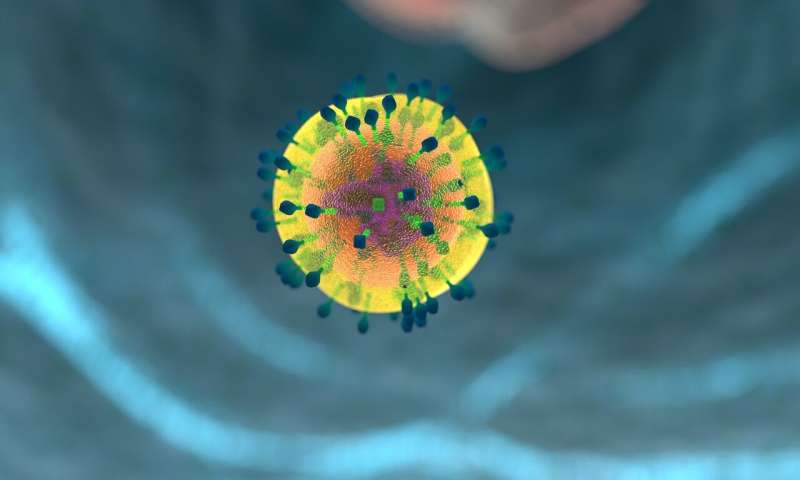Researchers unravel the early makings of an exhausted T cell

The immune system struggles to defeat cancer or chronic infections because many of the T cells that leap into action end up "exhausted," rendering them ineffective against disease. That path to exhaustion and what triggers it is a crucial one that researchers aim to better understand so they can stop or divert more T cells from heading down this path. Now, a new Penn Medicine study published in the journal Immunity, paints a clearer picture of the molecular mechanisms of newly formed, or "precursor," T cells driving the transformation. It's a discovery that could inform current treatments and the development of more powerful immunotherapies, cancer drugs, or both.
This early developmental decision was dependent on a key transcription factor (TF) known as TCF-1. TF is a protein that helps transcribe DNA into RNA. Genetically sequencing T cells early during chronic viral infection uncovered how TCF-1 plays a role in programing a T cell to either barrel toward exhaustion or become an "effector" T cell that holds its ground in the fight. This observation has implication for both chronic infections and cancer.
"What we've done here is effectively go back in time for exhausted T cells," said senior author E. John Wherry, Ph.D., chair of the department of Systems Pharmacology and Translational Therapeutics and director of the Penn Institute of Immunology. "If you understand what the exhausted T cell precursors look like and how they're working in terms of their internal wiring, we can rewire and do better than nature intended with immunotherapies. So, essentially what you're doing is trying to prevent the developmental path of exhaustion or change its trajectory, rather than take the end product of that pathway, the exhaustion, and try to re-engineer it."
The study builds off a previous one in Nature in June 2019 from Wherry's lab that found that a protein known as TOX, which varies in amount in different immune cells types, controls the identity of the cells that become exhausted. But the findings didn't tell researchers exactly when or how different that path of development was from the effector T cells and memory T cells—two important types of T cells to battle infections.
Effector T cells kill offending cancer cells and germs like bacteria or viruses. If an infection or tumor is cleared, most of this pool dies, but a subset persists. This set undergoes more rewiring and forms long-lived, self-renewing memory T cells capable of mounting a rapid recall response should an invader be detected a second time.
"The new paper identifies the early steps demonstrating the precursors to the developmental path toward exhaustion, and that they are different from the precursors that can give rise to effector and memory T cells," Wherry said. "We identified the molecular mechanisms, so we now know what wiring the precursor population needs to form into exhausted T cells and what protects that population from being depleted."
The findings could help inform immunotherapies and potentially identify patients that might benefit most from some treatments, the preclinical study suggests. If the T cell pathways could be mapped out early, then patients more likely to respond well to treatments such as checkpoint inhibitors could potentially be identified. Immune checkpoint inhibitors block proteins that stop the immune system from attacking cancer cells.
Unexpectedly, the researchers also discovered more about the dual role of a checkpoint pathway, known as PD-1. Checkpoint molecules like PD-1 are good targets for drugs, but they also appear to have a functional role early on in exhausted T cells, because they prevent them from being over stimulated. "Precursors of exhausted T cells might actually benefit from expressing PD-1 early on, while later on we want to block this pathway to reinvigorate these exhausted T cells," Wherry said.
The next step is to better understand whether this latest study can be applied to intentionally engineer the T cells to perform a certain way.
"These findings help define early exhaustion events and have implications to help distinguish exhausted T cells from effector and memory T cell developmental programs in settings such as cancer and chronic infections," the authors wrote.
More information: Zeyu Chen et al. TCF-1-Centered Transcriptional Network Drives an Effector versus Exhausted CD8 T Cell-Fate Decision, Immunity (2019). DOI: 10.1016/j.immuni.2019.09.013



















